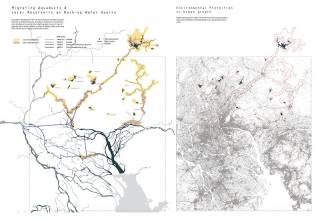Course abstract:
2013 marks the 30-year anniversary of the first established nature reserve in China's Three Parallel Rivers of Yunnan Protected Area (TPR). This UNESCO site is constituted of 15 core areas that, when connected by buffer zones, amount to eight contiguous units spread over 50,000 square kilometers. This fragmentation and gradation is not isolated to the TPR area but characteristic of rural China, illustrating conservation and the creation of wilderness as a political and economic tool. A slow-down in dam construction in recent years, despite high renewable energy targets of the Western Development Campaign for the TPR's virgin Nu river valley, is attributed to local politics. In this course, we use hydropower planning as a lens to understand China's west as not resultant from central planning mechanisms but instead developed out of complex political-economic productions institutionalized within technology and conservation. The course expands the repertoire of the design disciplines to extra-urban, extra-social geographies of global, paramount importance. We use landscape design's physical and material agency to explore natural resources and the political motivations, imaginations, and scientific metrics that underpin them.







